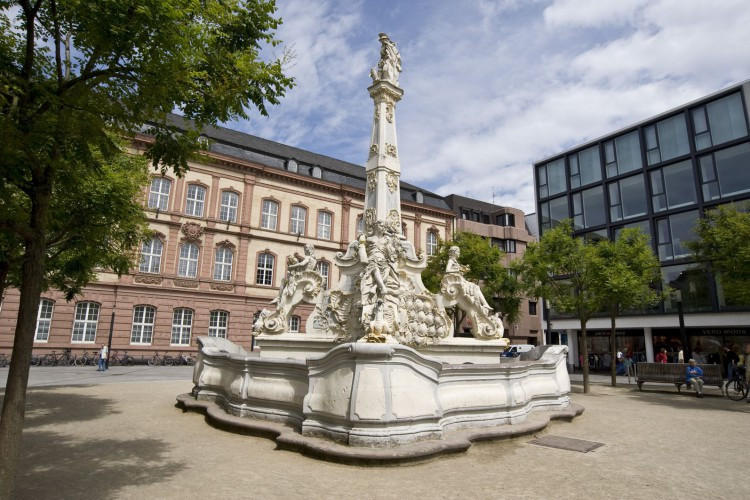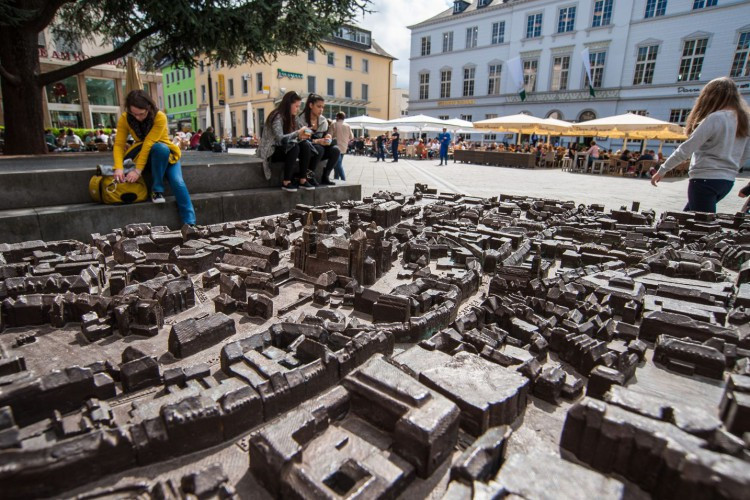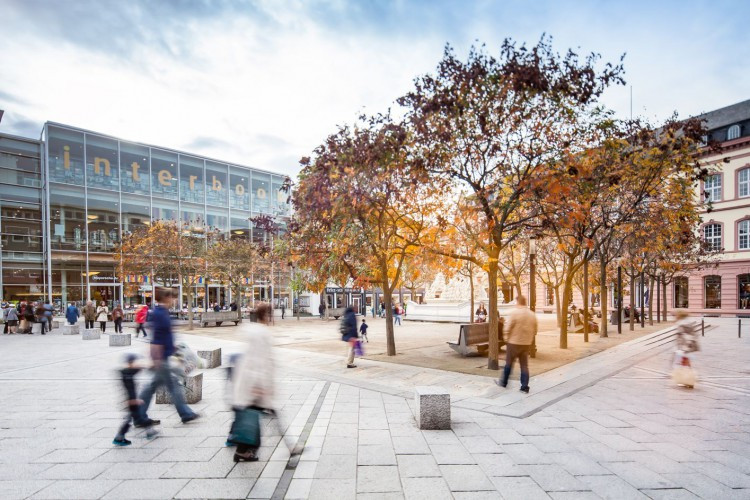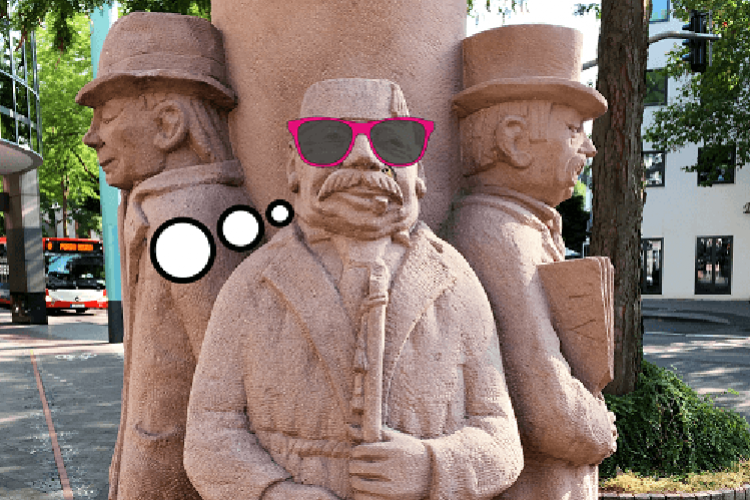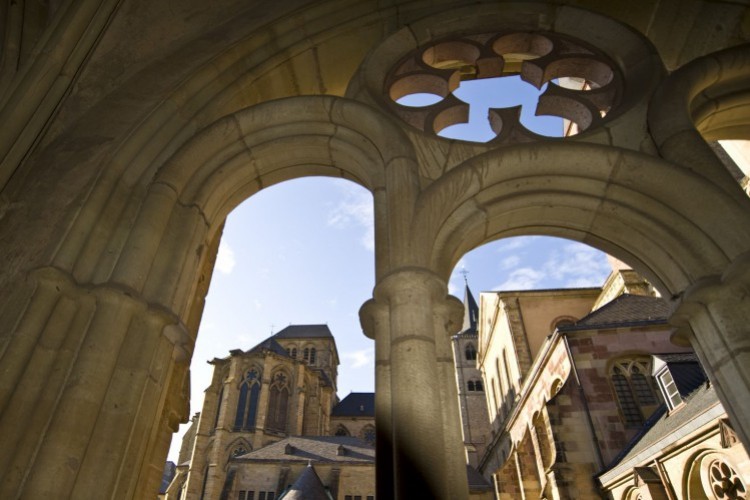Read more
The building (rebuilt after the war) at the southern end of the square today still (at least from the outside) serves as structural evidence of the Prussian influence in 19th-century Trier. At the opposite corner of the square stands a tall cedar, which was also the object of public upheaval in 2003. As part of the redesign of the square at the time, the old tree was due to be felled. But the massive civic protests were ultimately successful, and the cedar today remains one of the most striking sights at the Kornmarkt. Aside from the casino, its only rival could be the old main post office at the western end of the square, which was originally built in 1880, and then had two wings added 30 years later.
The modern-day ‘ruckus’ is more of a social nature, with the Kornmarkt being a popular meeting place for young and old, especially during the summer months. While the adults sit on the terraces of the surrounding restaurants and cafés, the children use the square’s little strip of water to play in. If they could talk, both the casino and the old cedar would no doubt approve of this use.
A must for: Families. Flâneurs. Break-seekers.
Relaxation: 50%
Food and drink: 50%
Architecture: 50%
PSSSST! THE INSIDER TIP:
The magnificent St George’s Fountain (Georgsbrunnen) in the middle of the Kornmarkt is considered one of Germany’s finest rococo fountains. Standing eleven metres tall, it tells stories of sensuous seasons and dragon-slaying heroes. Just like the basilica of St Paulinus and the interior of the Electoral Palace, it was designed by court master builder Johannes Seiz. Built in honour of Franz Georg von Schönborn, Elector of Trier, St George’s Fountain is one of the city’s most elaborate fountains – but definitely not the greatest storyteller.
The modern-day ‘ruckus’ is more of a social nature, with the Kornmarkt being a popular meeting place for young and old, especially during the summer months. While the adults sit on the terraces of the surrounding restaurants and cafés, the children use the square’s little strip of water to play in. If they could talk, both the casino and the old cedar would no doubt approve of this use.
A must for: Families. Flâneurs. Break-seekers.
Relaxation: 50%
Food and drink: 50%
Architecture: 50%
PSSSST! THE INSIDER TIP:
The magnificent St George’s Fountain (Georgsbrunnen) in the middle of the Kornmarkt is considered one of Germany’s finest rococo fountains. Standing eleven metres tall, it tells stories of sensuous seasons and dragon-slaying heroes. Just like the basilica of St Paulinus and the interior of the Electoral Palace, it was designed by court master builder Johannes Seiz. Built in honour of Franz Georg von Schönborn, Elector of Trier, St George’s Fountain is one of the city’s most elaborate fountains – but definitely not the greatest storyteller.

